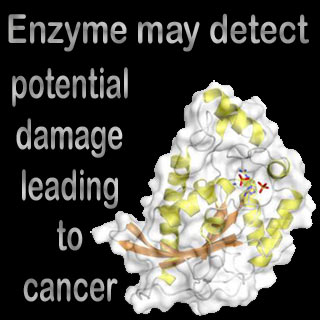
This study was conducted by two Brown University researchers, Gerwald Jogl, assistant professor of biology in the Department of Molecular Biology, Cell Biology and Biochemistry; and Hua Li, a fifth-year PhD student based in Jogl’s lab.
TIGAR aids in controlling energy production in the cell. This enzyme is said to be triggered after cell damage. Thus the enzymes existence in the cell can point out any potentially cancer developing substance. The study researchers state that triggering of TIGAR lowers the speed of all processes in the cell, which gives additional time to repair cell damage. It is believed that this process may also aid in curbing any more potential cancer causing damage.
Their more than a year’s research revealed that their TIGAR enzyme structure has an even higher substantive active site as previously imagined. They used the X-ray crystallography method to determine this structure. Principle investigator and co-author of the study, Jogl says that, “It will help us to understand where else we should be looking for good [anti-cancer] targets.”
The National Synchroton Light Source, Brookhaven, NY, produced the intensive X-ray light, used for the conduction of this procedure. This light was used to evaluate the crystals that were born out of the TIGAR enzyme samples. A previously conducted study by St. Jude’s Children’s Research Hospital had apparently identified the existence of the TIGAR enzyme.
Lead author Li, and Jogl hope that their study may reveal that the structured TIGAR enzyme has more functions in the cell. They point out the importance of TIGAR knowledge, by saying that this enzyme could lead them to the potential cancer causing damage. This enzyme could help in the early detection of cancer, or in the development of preventative treatments.
This study was supported by a grant from the National Institute of Health.
Their findings are published in The Journal of Biological Chemistry.
